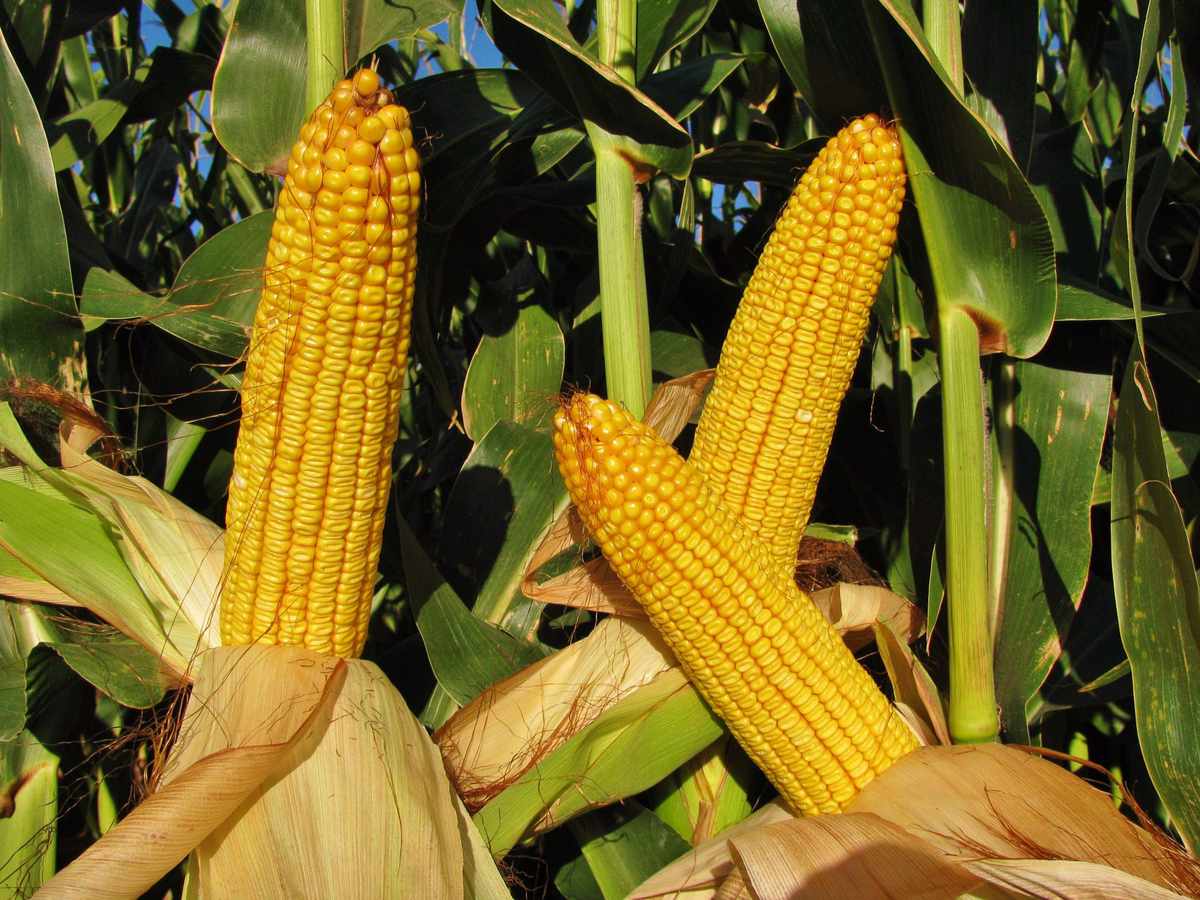What Is The Difference Between Field Corn And Sweet Corn?

Peter bowman / EyeEm / Getty Images
TABLE OF CONTENTS
On This Page
What is Cow (Field) Corn?
What is Sweet Corn?
Types of Sweet Corn
Other Types of Corn
Corn is often referred to as "yellow gold" because it has many uses, including making products and byproducts daily. From grocery store items (sweeteners, cereals, taco shells) to industrial products (pharmaceuticals, fuel ethanol, recyclable plastics) to animal feed (grain and feed corn for cattle, swine, poultry, and fish), corn has a multitude of uses. Every year farmers in the United States produce over 14 billion bushels of corn. The diversity in the types of corn grown, however, has decreased. Large corn farmers are producing what is often called cow corn. This corn is needed for feed, fuel, and food products, while the smaller farmers and home gardeners grow the variety of corn we eat, known as sweet corn. You thought all corn was the same? Read on and learn the difference between cow corn (or field corn) and sweet corn.
What is Cow (Field) Corn?
When looking at a fresh ear of cow corn, also known as dent corn or field corn, it is easy to identify—there is a dent, or dimple, in the crown of each individual corn kernel. Cow corn has high starch and low sugar content, which means it's not sweet and juicy like the corn you buy to eat from your grocery store or farmers market. Farmers allow cow corn to dry on the stalks in the field before harvesting since it's not intended to eat fresh. Most cow corn in the U.S. grows as animal feed, although some varieties of dent corn end up as a grain in products like chips, cornmeal, and masa. This type of corn contributes to making bourbon and moonshine. The majority of corn grown in the U.S. is yellow dent corn, though you may also find dent corn in a wide variety of colors.
WATCH: Creamed Corn
What is Sweet Corn?
The variety of corn we enjoy eating is called sweet corn, which does not grow nearly as tall as field corn (another identifiable difference). Sweet corn has a higher sugar content than cow corn and is picked while immature before the sugar has a chance to turn into starch. Fresh, sweet corn is juicy. The juice, or "milk," is how you get the creaminess of creamed corn.
Types of Sweet Corn
There are several varieties of sweet corn, with Silver Queen being one of the most popular in the South. All sweet corn is available in white, yellow, and bicolored varieties. When purchasing fresh sweet corn at the store or farmers' market, look for ears with brown silks at the top—a sign that the kernels inside were as developed as they were going to get when picking the ear of corn. Ensure the leaves that wrap the ear still look fresh and green (a little brown around the outside edges is fine).
Other Types of Corn
There are other types of corn, including flint, popcorn, and flour, but industrial farming has led to a narrower selection, with only a few types of corn being grown by large farmers. Heirloom corn refers to corn that's not mass-produced and tends to be varieties that have all but disappeared. Fortunately, farmers are working to bring back heirloom varieties of corn.

